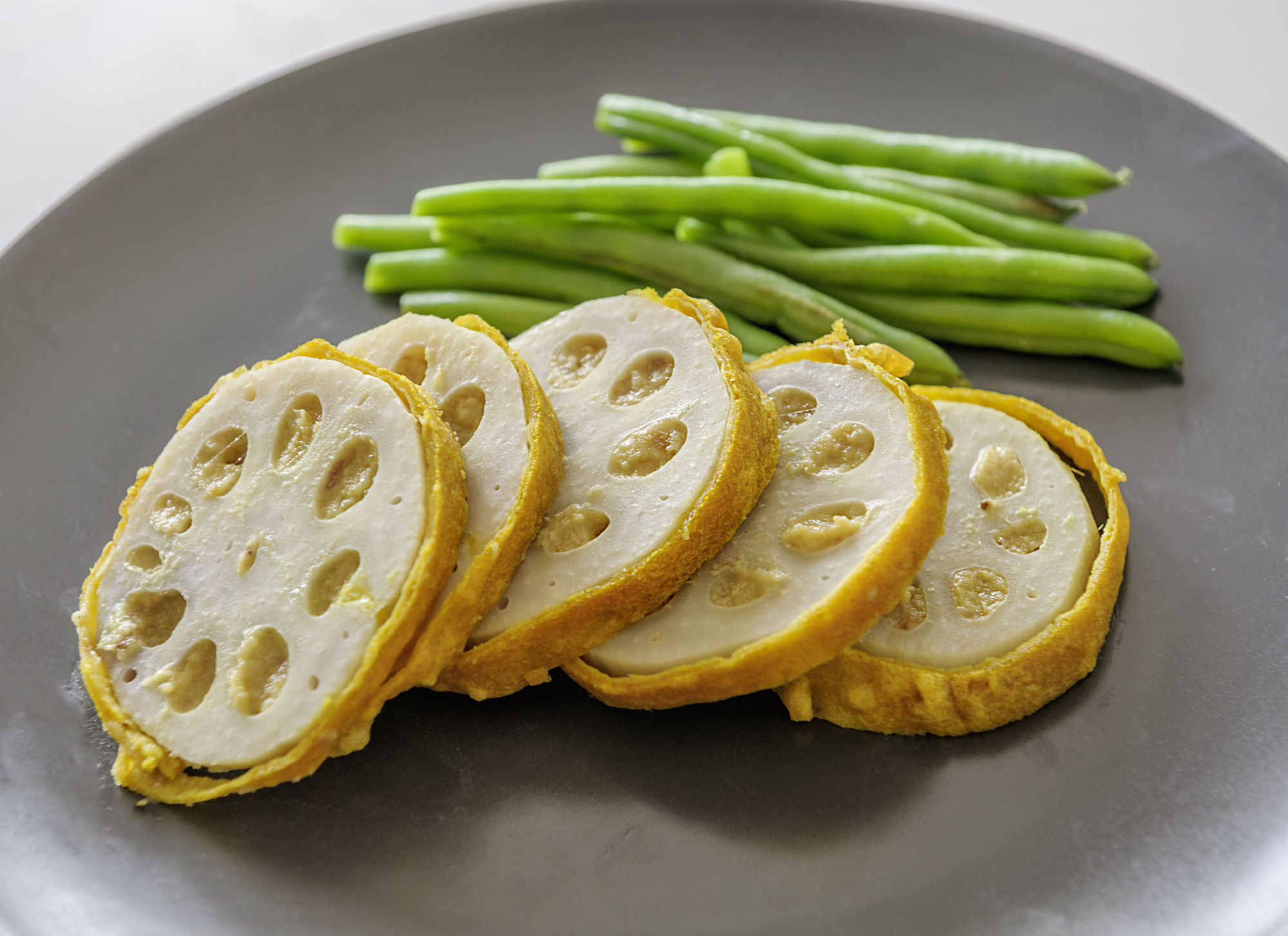Lotus root (renkon) is readily available in Japan year-round, but its main season starts in the fall and continues until March. Although it's called a root, the edible parts are the swollen rhizomes, or the underwater part of the plant, which grow connected like sausage links. In haiku, the phrase "hasune o horu" ("digging the lotus root") indicates winter.
The oldest written records of eating lotus root in Japan are from the Nara Period (710-94), but there is archaeological evidence that the plant was cultivated at least 2,000 years ago. However, it wasn't seriously farmed until the Meiji Era (1868-1912), when high-yielding varieties began to be imported from China. Today, the top domestic producer of lotus root is Ibaraki Prefecture, especially the town of Tsuchiura, which proclaims itself to be the "lotus root capital of Japan."


















With your current subscription plan you can comment on stories. However, before writing your first comment, please create a display name in the Profile section of your subscriber account page.